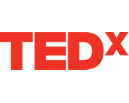Is your social enterprise apparatus purpose -built?
According to Gartner, most social enterprises fail due to a lack of purpose. Our own experience over the past decade tells us that the other biggest reason for the failure of social enterprises is a lack of proper planning and bad network management. In this article from Social Enterprise Times you’ll find a great list of how social enterprises overcome potential failings of purpose. The list focuses on spurring participant magnetism, establishing a community draw, creating organizational value, fostering a low community risk, and promoting organizational evolution to help maintain a sense of purpose in your social enterprise. For a breakdown of each of these characteristics please continue reading below.[For the entire article click here]Why The Vast Majority Of Enterprise Social Collaboration Initiatives Fail
Here are five characteristics of a good purpose:
- Participant magnetism: The purpose should naturally motivate people to participate. This is the “what’s in it for me” characteristic. Users should easily grasp its importance and the value of participating. The purpose must have meaning to the participants, and build within them a compelling need to participate. If you have to create interest among users, especially through costly incentives, you’ve chosen the wrong purpose.
- Community draw: The purpose must resonate with enough people to catalyze a community and deliver robust user-generated content. The best communities are heavily unbalanced in their two-way approaches, meaning that the community contributes far more content than the supporting enterprise. Find out how powerful the purpose is for drawing in significant numbers of people and contributions.
- Organizational value: The purpose should have a clear business outcome. This is the “what’s in it for the organization” characteristic. Choose purposes where organizational value can be clearly measured and shared with the community as feedback and motivation to continue participating.
- Low community risk: Choose low risk over high reward. The purpose, especially early in an organization’s social application maturity, should be low risk. This overall characteristic derives from four types of risk: Culture risk is the risk that the corporate culture is not conducive to mass collaboration. Adoption risk is the risk that people will not be inclined to collaborate on this subject or in this community. Information risk is the risk that the community’s shared information will be sensitive in nature. Result risk is the risk that, even if a community forms, its interactions will not bear fruit.
- Promoting evolution: Select purposes that you and the community can build on. Determine the dependencies between purposes. Some purposes have a more natural tendency to lead to others and to facilitate emergence, while that others are more subordinate. Those that have no dependencies but can lead to other purposes score higher.

